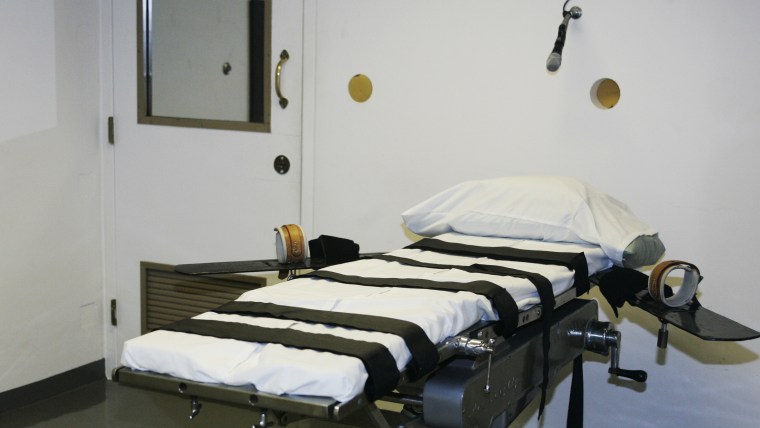Clayton D. Lockett was one of two death row inmates scheduled to die Tuesday night in Oklahoma. At 6:33 PM, ten minutes after receiving the first drug intended to make him unconscious, Lockett began to twitch, his foot shook, and he mumbled. Four minutes later, he tried to rise and exhaled loudly. At that point, prison officials drew a curtain in front of witnesses watching the execution and discovered "vein failure"--the drugs were no longer flowing through the inmate’s vein. At one point, Lockett reportedly called out, "Oh man."
Lockett died of a heart attack—not from the injection—at 7:06 PM, a full forty three minutes after his execution started. The second execution scheduled for Tuesday in Oklahoma —of Charles F. Warner—was later delayed fourteen days.
Wednesday afternoon, Oklahoma Gov. Mary Fallin announced an "independent review" of the state's execution protocol. “I believe the death penalty is an appropriate response and punishment to those who commit heinous crimes against their fellow men and women,” Fallin told reporters. “However, I also believe the state needs to be certain of its protocols and procedures for executions and that they work.”
Behind the tragedy is a disturbing trend. In 2011, Hospira, the lone American producer of a key lethal injection chemical--sodium thiopental--stopped making the drug. Later that year, the European Union issued an export ban on the drug. With one of the only lethal injection drugs unavailable, states began creating their own ad hoc lethal injection cocktails.
The drug cocktail used to kill Clayton Lockett—a mixture of midazolam, vecuronium bromide and potassium chloride—was one of those cocktails. It had never been tested before in such low doses.
And Lockett is not alone. A full 7 percent of lethal injections have gone awry. During his execution last January, another Oklahoma man--Michael Wilson--cried out, "I feel my whole body burning."
In a nation whose founding document bans the use of cruel and unusual punishment, it may be shocking that the death penalty exists at all. But when states choose to execute their own citizens using untested drug cocktails--in some cases paying petty cash for those drugs in order to cover their tracks--something is seriously awry.
